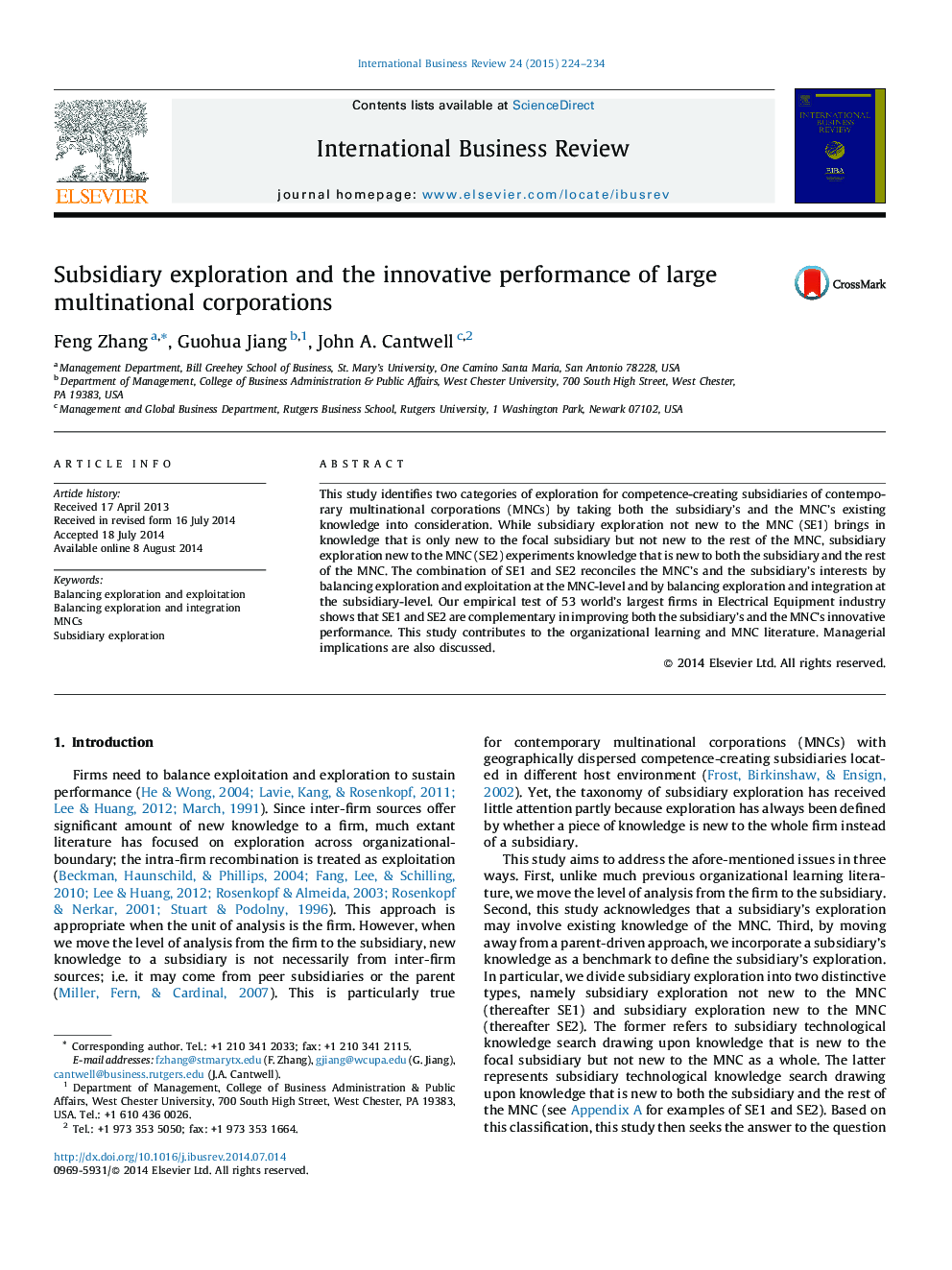| Article ID | Journal | Published Year | Pages | File Type |
|---|---|---|---|---|
| 1001514 | International Business Review | 2015 | 11 Pages |
•We differentiated two types of exploration at the subsidiary-level.•We moved away from a parent-driven approach in subsidiary activity taxonomy.•We identified the ambidextrous nature of subsidiary exploration.•The two types of exploration are complementary in improving performance.•Our results suggest a strategic option of achieving ambidextrous learning.
This study identifies two categories of exploration for competence-creating subsidiaries of contemporary multinational corporations (MNCs) by taking both the subsidiary's and the MNC's existing knowledge into consideration. While subsidiary exploration not new to the MNC (SE1) brings in knowledge that is only new to the focal subsidiary but not new to the rest of the MNC, subsidiary exploration new to the MNC (SE2) experiments knowledge that is new to both the subsidiary and the rest of the MNC. The combination of SE1 and SE2 reconciles the MNC's and the subsidiary's interests by balancing exploration and exploitation at the MNC-level and by balancing exploration and integration at the subsidiary-level. Our empirical test of 53 world's largest firms in Electrical Equipment industry shows that SE1 and SE2 are complementary in improving both the subsidiary's and the MNC's innovative performance. This study contributes to the organizational learning and MNC literature. Managerial implications are also discussed.
